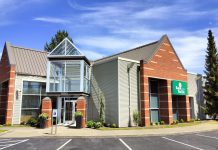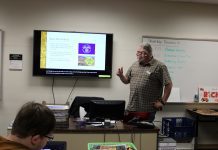Every day we strive to take steps to improve our lives—in the last few years, more folks have also started talking about ways to improve the ends of our lives. From palliative care to hospice and the advance directives we use to explain our wishes to our families and doctors, there’s certainly a lot to talk about. One of the local voices in that vital discussion is Bellingham’s Hospice House, which began as an independent program in the 1980s, has been under the care of PeaceHealth since 2005, and opened the doors of its own facility in September of 2010.
Since this is a new subject for many people, Amie Carr, volunteer coordinator at Hospice House, is happy to define some terms. “Palliative care is the step before hospice, for people that have a life-limiting or life-challenging medical diagnosis, when you would get support for the symptoms of your treatment,” Hospice care begins after treatment of a disease is stopped, when it’s clear that the person is not going to survive their illness.
Though treatment ends, there are ways to insure the patient can live their last days with dignity and comfort. “When you come into hospice service, you’re assigned what we call a care managing nurse, a registered nurse that is kind of the quarterback for your team,” says Carr. “In addition to the nurses, we have two hospice physicians that work with our patients in their homes or at facilities.”

Dr. Megan Ellingsen is a full-time Hospice House physician. She has certification in hospice and palliative care, a specialty beyond the normal medical school experience, as does Dr. Angela Caffrey, a second physician who splits her time between Hospice House and supporting palliative care at the Cancer Center.
An impressive array of volunteers fill many other roles at the hospice—about 185 of them, in fact. “Seventy [volunteers] work at Hospice House, and the rest serve our community and outpatient care programs,” says Carr. Most volunteers come to Hospice House because they lost a loved one who received services there; they want to be able to support others going through the same situation. “We’re always looking for more volunteers that have a heart for what we’re doing.”
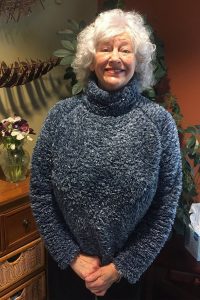
Kay Rich has been Hospice House volunteer since they first opened their doors, and she cherishes her ability to lend a helping hand. “I’ve been in the position of losing people. I once spent the better part of two months in the Intensive Care waiting room of a hospital where I had somebody. And that’s where I learned about the camaraderie that patients and staff develop,” she says. “People are going through a very difficult part of their lives, and we’re all very respectful of that, and feel compassion for them, and we want to do whatever we can to help them.”
Volunteers and partnerships are crucial to the operation of hospices everywhere. “They’re not moneymakers, so it needs to be community funded and supported to keep it open and viable,” says Carr. The Whatcom Hospice Foundation was created to oversee those needs, and is the perfect place for community members to make a contribution.
The network of support extends into the healthcare business community, as well. “Hoagland Pharmacy is a huge support to our community program, and we work with the St. Joseph Medical Center pharmacy team,” Carr says. “Michelle Walsh is a Social Worker that runs our bereavement program, and we are super fortunate to have Robin Curtis working with us as our acupuncturist.”
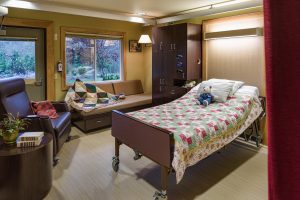
As it turns out, a lot of voices in the growing end-of-life conversation come from our region of the country. “The Pacific Northwest is pretty unique and pretty brave in having these discussions,” says Carr. “In fact, we have the Palliative Care Institute at WWU, which I think is really a great influence, with tons of educational opportunities for our community. Hillary Walker at PeaceHealth is in charge of an advance directive planning team, and we’re all working to make those conversations more comfortable. They could help our families make choices if we’re unable, and let them make them confidently.”
Those close relationships are what the Hospice House is all about. “It’s a fairly small house, so the staff and the volunteers all get to know each other very well, and we’re very comfortable together,” Rich says. “It gets to be almost like a little family of sorts. We know about each other’s sufferings. And I try very hard to make the families comfortable, to help them understand that we have a lot of respect for what they’re going through.”
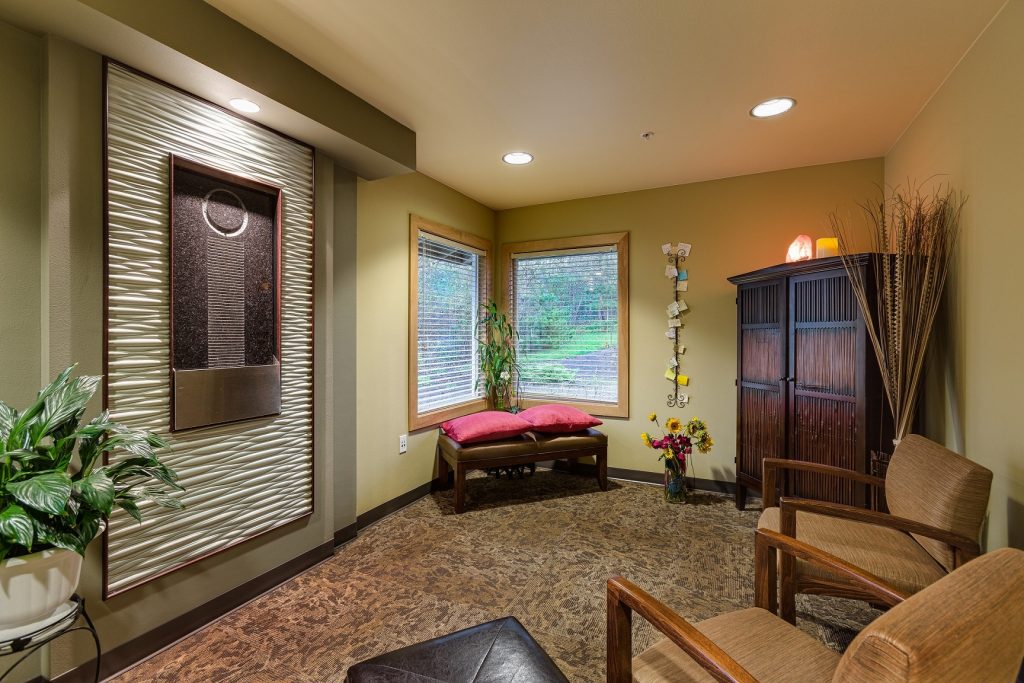
The Hospice House maintains a sanctuary for private conversations, or a simple moment of silence. 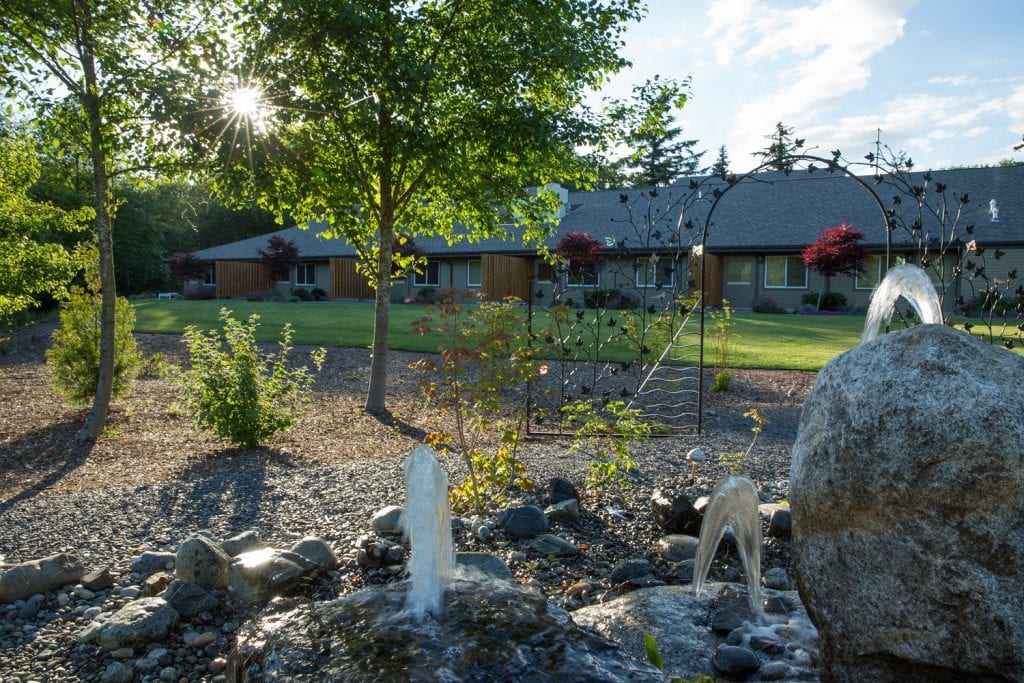
Water features and a walking path provide a quiet place to take a break from caring for loved ones. 
Visitors like Duncan and Tashi can go a long way toward brightening a patient’s day. 
In such an intimate setting, forming a family-like bond is a common occurrence for all those involved with Hospice House.
All photos courtesy of Hospice House





















